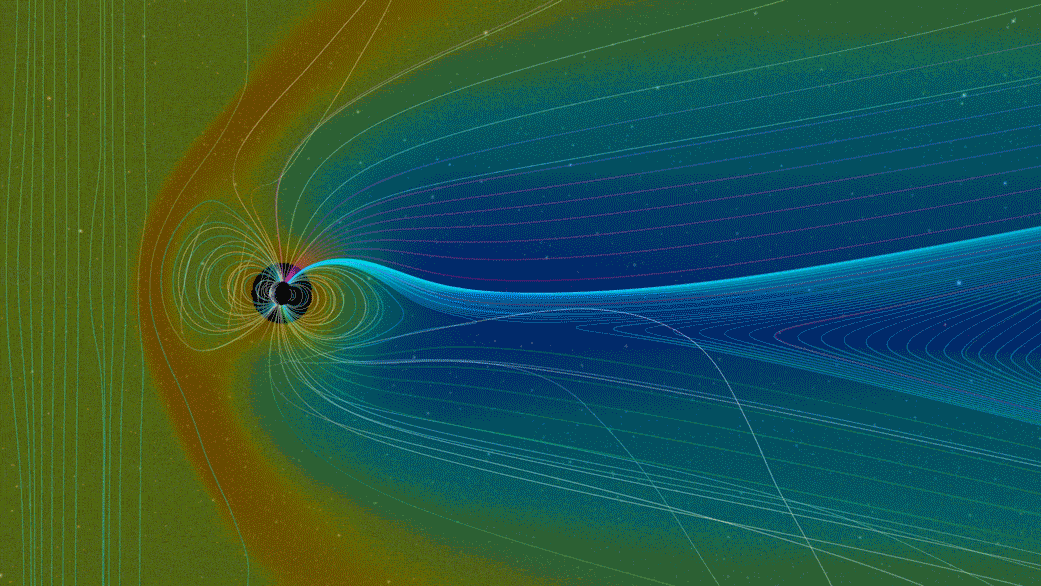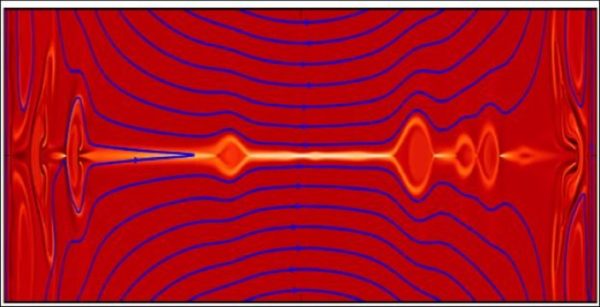"We are inside this plasma,
and plasma is inside everything. It is incandescent
in the sun, and I am curious to know if you
are able to stop orbiting yourself around it even for a second." -Marieta Maglas
The phenomenon of solar flares has been understood qualitatively but not quantitatively for a long time. The Sun's magnetic field confines its plasma into thin sheets of electric current, and when the field changes, the lines split and reconnect, causing the plasma to be expelled at tremendous rates. This same physics underlies solar flares, Earth's aurora, laboratory plasmas and possibly even gamma ray bursts!
 Magnetic reconnection between the Sun-Earth system. Image credit: NASA's Goddard Space Flight Center/Duberstein/Magnetospheric Multiscale Mission.
Magnetic reconnection between the Sun-Earth system. Image credit: NASA's Goddard Space Flight Center/Duberstein/Magnetospheric Multiscale Mission.
But when you do the calculations, the reconnection timescales and speeds are too slow to account for what we see. For the past few years, a new idea came about that had a hope of explaining things: the plasmoid instability idea. For the first time, a team of physicists has worked out both theoretically and experimentally how this works, and they've nailed it. Most excitingly, the results don't look like what a great many have expected for a long time!
- Log in to post comments


Disconnecting magnetic field lines means to me magnetic monopoles!?!?
No, both poles are still there, but *some of* the magnetic field now has its force directed away from the other pole.
The field lines aren't real, and the poles aren't separate entities, they're reinforcing each other in a specific direction. Not location.
@Peter #1: No monopoles. You can easily sketch the simplest case by yourself: Take a simple bar magnet (north at the top, south at the bottom) and draw the field lines from one pole, bulging outward near the middle, and coming back to the other. That's a stable field configuration.
Now take a second bar magnet oriented the opposite way (south at the top and north at the bottom), with the same field lines drawn. As you bring the two bars closer together, you can see how the lines near the middle (the bulgy bits) will touch and cross over each other. At that point, it's more favorable (lower energy) for the field to connect the north of one bar straight across to the south of the other bar. That's reconnection.
Well, you can only see them if you put the magnets under the iron filings. There aren't really any lines, but the iron aligns with them and you can see the preferential positions that describe the field lines.
Indeed the shape of the trails of iron filings are why we use today the idea Faraday brought into electromagnetism of field lines.
Though you may not be able to do the view of changed field lines very quickly with iron filings on plain paper. The iron would have to be jiggled into shape at each significant change of position.
How fast is it? What was the earlier prediction?